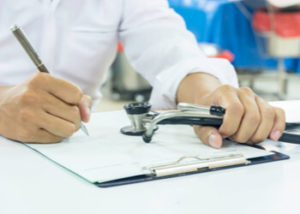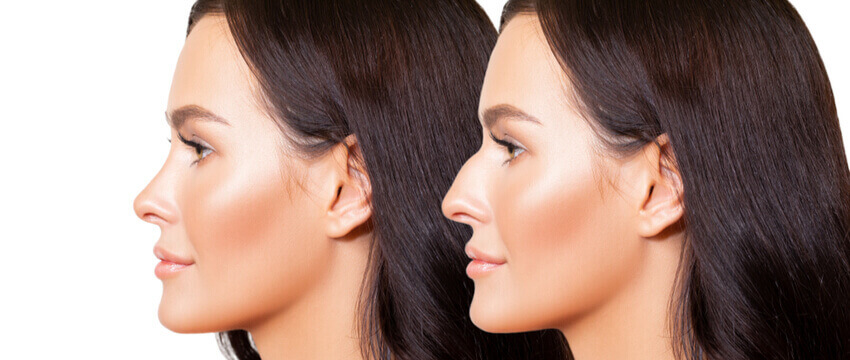You may have heard of rhinoplasty as one of the most common plastic surgery procedures in the whole world. In fact, rhinoplasty is one of the top 10 most popular plastic surgery procedures in the world. But do you have any idea of what makes this surgical procedure part of the most wanted cosmetic surgeries? Let us help you understand the basics of rhinoplasty, from its definition, how does rhinoplasty work, its risks, what to expect after the nose job surgery, and costs.
How does rhinoplasty work: An overview of the procedure
For those who want to have a new look that does not necessarily change the whole profile of your face, plastic surgeons may recommend getting a nose job surgery. You may be wondering, how can a simple nose job transform my whole look? Well, let’s get into the details.
What is a nose job surgery?
Rhinoplasty, the medical term for a nose job is a plastic surgery procedure that corrects or alters both cosmetic and functional aspects of your nose. It is a cosmetic surgery procedure because it can change the shape, size, height, and profile of your nose to suit the proportion of your face. It is also a reconstructive surgery that fixes the different malformation of the nose caused by congenital defects or trauma-related injuries from accidents. These purposes make rhinoplasty an exceptional surgery procedure as it is the only plastic surgery procedure that can cater to both medical and aesthetic problems of a patient.
Types of rhinoplasty
There are two main types of nose jobs based on the location of the surgery’s incisions, the closed and open rhinoplasty. Let us discuss the difference between the two so we can answer the question, ‘how does rhinoplasty work?’
Open rhinoplasty. It got its name from how this type is made to fully visualise the necessary structures of the nose for more complicated revisions and repair. It has incisions located inside and outside the nose, and the one outside is the particular aspect of this procedure that differentiates it from the other type.
Closed rhinoplasty. For this nose job surgery type, all the necessary incisions are located inside the nose, so patients who are deemed by their surgeon to undergo this procedure could expect that no scars would be visible post-surgery. Minor changes and repair of the nasal shape, size, height, and function may be done using this type.
Considerations before getting a nose job surgery
If you are planning or looking into having a nose job surgery, here are some things you would need to look into so you would know that you could be a good candidate for the procedure.
Age. Most plastic surgeons would prefer to have adult patients who have fully developed nasal structures. The reason for this is because young patients who have had rhinoplasty with underdeveloped noses would have had complained of unforeseen changes to the overall results of their surgery. Doctors may recommend waiting until they reach the age of 17 or 18, so both of them can be sure that the changes performed by a rhinoplasty surgery will be permanent and they already understand the risks and consequences of undergoing such major procedure. The exemption to this rule is when a young patient has a congenital defect like a cleft palate. Plastic surgeons would ultimately perform a reconstructive surgery even on infants not to improve the look of the patient, but to correct the anatomical malformation of the nose and palate to improve their physiological (respiratory and gastrointestinal) functions.
Lifestyle. Patients who wish to undergo rhinoplasty, or any major surgery for that matter, should stop smoking. It is a fact that smoking cigarettes and tobacco will not do our bodies any good. It is one of the main causes of several diseases we may acquire as we age, and it also affects several functions of the body, including our natural healing. Failure to stop smoking before and after a surgical procedure may increase the patient’s risk of infection due to prolonged healing and recovery period.

Race. This is a relatively big consideration since social media has a huge impact on how we see beauty nowadays. People should aim to have their features altered based on how well-proportioned their noses are to their faces, for instance, and not how social media dictates what is beautiful. Western standards, as an example, will not be natural-looking in Asian patients, and vice versa.
How does rhinoplasty work: Risks of getting a nose job
No surgery will ever be exempted from unforeseen risks and complications. Even the highly-experienced surgeons will still encounter bumps along the way as every procedure and patient condition is different from the others. Here are some of the risks and complications that both the doctor and the patient should be alert and informed:
- Risk of infection
- Anesthesia reactions
- Excessive bleeding
- Problems with breathing
- Loss of sensation on the nose
- Pain and tenderness on the site
- Obvious scarring and bruising
- Need for revision surgery
- Dissatisfaction on rhinoplasty results
If you have any concerns that plague your mind about your upcoming nose job surgery, do not hesitate to ask the counsel of your plastic surgeon. He is the only one who can clearly answer your questions because he already studied your condition and he knows the ins and outs of the surgical procedure.
What to expect during the recovery period
Immediately after the surgery, your face particularly the nasal area will be splinted and bandaged to protect and maintain the form of your reshaped nose. Lie down straight, with your head raised by a couple of pillows just so that your nose is higher than your chest. You may complain of soreness and congestion along the area. These are normal post-surgical complaints and you can expect them to fade as days pass. You will be given pain and anti-inflammatory medications to help you manage and alleviate the post-operative symptoms and may it easier for you to recover.

You can expect that swelling of the nasal area will persist for a couple of months up to a year, making the final results of your surgery a bit hard to distinguish. Your surgeon may allow you to go back to work at least two weeks after the surgery, provided that no other complications were noted. However, compliance with the work restrictions and limitations should be ensured and enforced so that no other post-surgical problems will arise.



Recent Comments